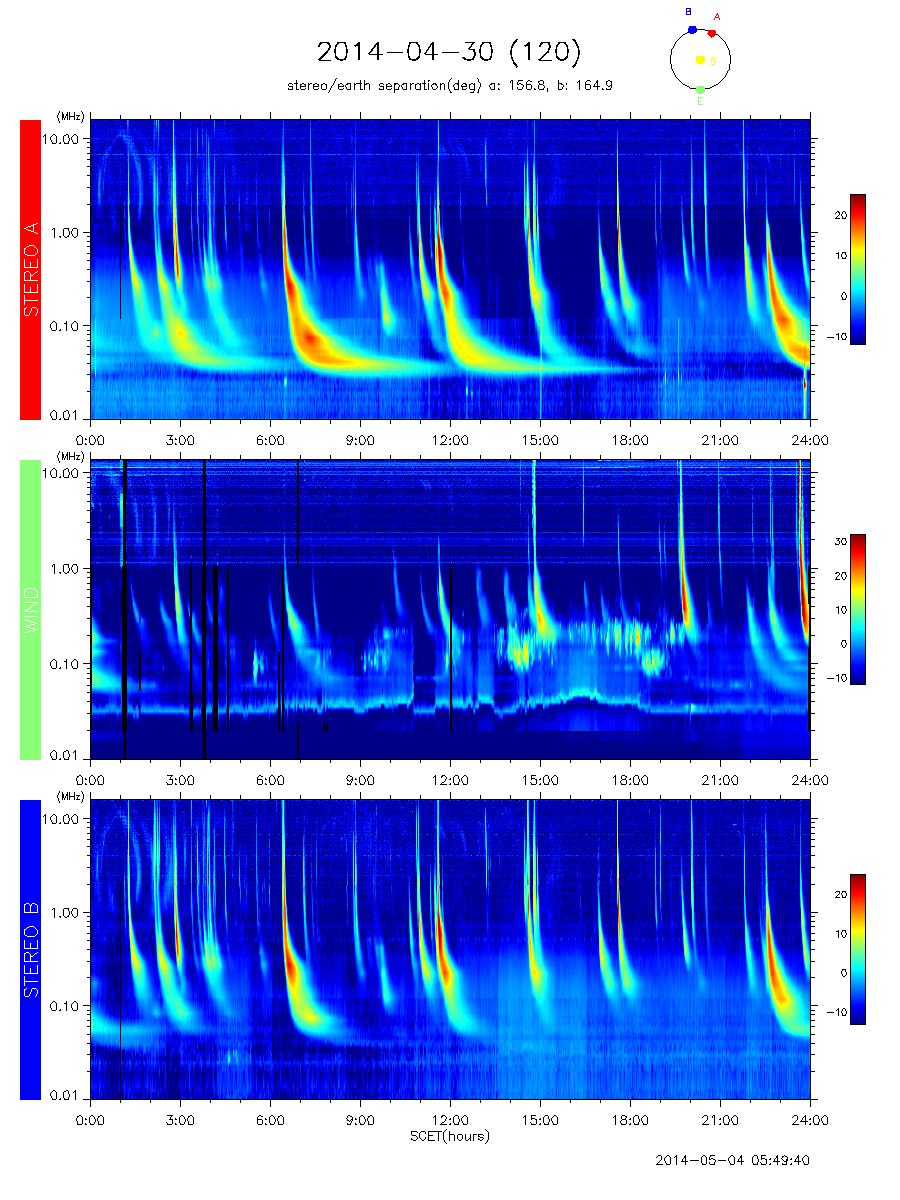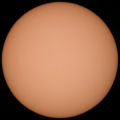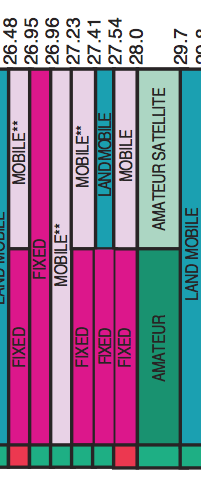|
Observing Information
- OBS-Time: April 30, 2014, 2339 UT
- OBS-Location: Camas, WA USA, 16.6 miles East-North-East from the center of Portland, OR, USA

Hardware Equipment
- Radio: NooElec NESDR Mini SDR & DVB-T USB Stick (R820T) based on the Realtek RTL2832U and the Raphael Micro R820T
- FM trap is used to remove the strong FM stations from overloading the SDR.
- Radio Shack FM trap, See the frequency response in the reviews.
- Antenna: Scanner Ant-Base 30-1300 Mhz by Antennacraft, includes 50 feet of RG-6
- Laptop: HP G70 NOtebook PC, Pentium Dual Core CPU, T4200 @ 2.00 GHz, 3 GB RAM, 32-bit
- Data logging to Toshiba 2TB USB hard drive

Software
- SDR# V1.0.0.1193
- Less than 26.951 MHz start frequency
- 28 MHz center frequency
- More than 29.051 MHz stop frequency
- 2.4 MHz frequency span
- 2.4 MHz capture bandwidth
- ACG off
- RF Gain 33.8 dB
- Blackman-Harris 4 FFT window, resolution 32,768
- Python 2.7.6 and
Python Imaging Library (PIL V1.1.7) script taking screen captures every 5 seconds
- Ridiculously Simple NTP Client by Wolfgang "Wolf" DL4YHF for time keeping
- Microsoft Windows Vista Home Premium, Service Pack 2

Radio JOVE Data Archive Calendar

Verifying Solar Burst
NOAA/National Weather Service
National Centers for Environmental Prediction
Space Weather Prediction Center
Solar Event Reports (Edited Events)
- Solar burst began at 2339 UT and ended at 2341 UT
- Reporting observatory CUL: Culgoora, Australia
- Q = Quality: C = Corrected report
- Type RSP: Sweep-frequency radio burst
- Frequency: 18 MHz to 150 MHz
- Particulars: type III burst of major intensity 3
- Type III: Fast drift burst
- 3 is major intensity rating
:Product: 20140430events.txt
:Created: 2014 May 01 0302 UT
:Date: 2014 04 30
# Prepared by the U.S. Dept. of Commerce, NOAA, Space Weather Prediction Center
# Please send comments and suggestions to SWPC.Webmaster@noaa.gov
#
# Missing data: ////
# Updated every 30 minutes.
# Edited Events for 2014 Apr 30
#
#Event Begin Max End Obs Q Type Loc/Frq Particulars Reg#
#-------------------------------------------------------------------------------
5680 + 2339 //// 2341 CUL C RSP 018-150 III/3
|

NASA STEREO / WAVES
NASA WIND-WAVES: The Radio and Plasma Wave Investigation on the WIND Spacecraft
NASA STEREO (Solar TErrestrial RElations Observatory)
NASA STEREO / WAVES data



|
![]()

![]()



